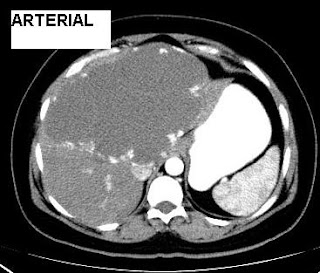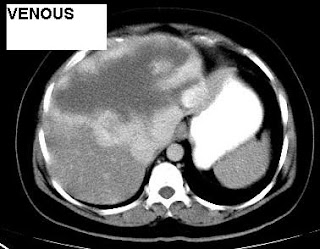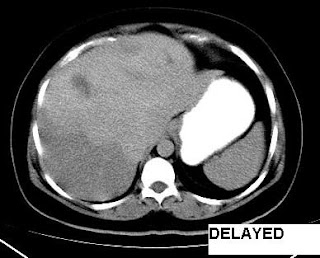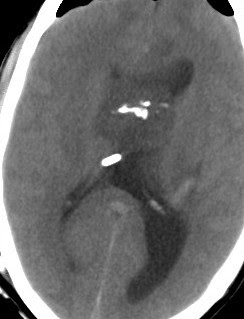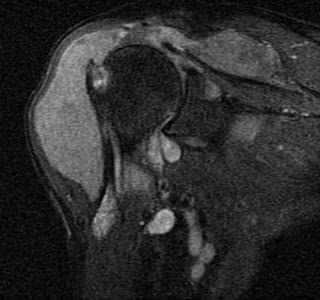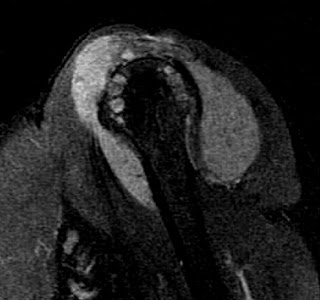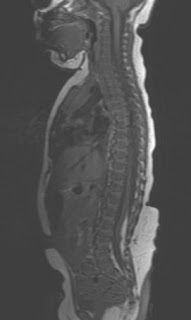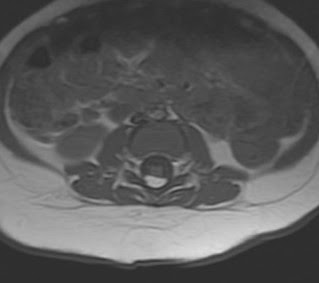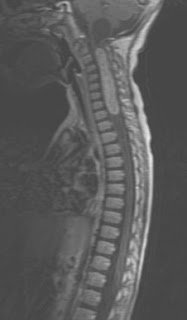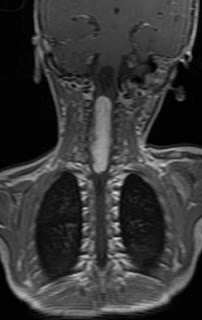
Here is a case of Renal Hydatid for the Radiology Grand Rounds submitted by Dr MGK Murthy and Dr Sumer Sethi of Teleradiology Providers. Concept and Archive of the Radiology Grand Rounds is available at- Radiology Grand Rounds
Echinococcosis is a worldwide zoonosis produced by the larval stage of the Echinococcus tapeworm. Adult worm lives in the proximal small bowel of the definitive host, attached by hooklets to the mucosa. Eggs are released into the host's intestine and excreted in the feces. Humans may become intermediate hosts through contact with a definitive host (usually a domesticated dog) or ingestion of contaminated water or vegetables. The ovum loses its protective layer as it is digested in the duodenum. Once the parasitic embryo passes through the intestinal wall to reach the portal venous system or lymphatic system, the liver acts as the first line of defense and is therefore the most frequently involved organ. Renal hydatid is rare accounting for 2% usually. There are no clincal symptoms except cystic rupture into the collecting system, which leads to acute renal colic and hydatiduria .
Imaging findings in hydatid disease depend on the stage of cyst growth (ie, whether the cyst is unilocular, contains daughter cysts, or is partially or completely calcified [dead]) . A difference in attenuation and signal intensity between the fluid in the central portion of the cyst and that in the peripheral cysts is a typical finding in echinococcosis due to a difference in content .Daughter vesicles (brood capsules) are small spheres that are formed from rests of the germinal layer and appear as cysts within a cyst. They contain the scolices and hooklets, along with sodium chloride, proteins, glucose, ions, lipids, and polysaccharides . When daughter cysts are separated by the hydatid matrix, they demonstrate a "wheel spoke" pattern .
Imaging findings in hydatid disease depend on the stage of cyst growth (ie, whether the cyst is unilocular, contains daughter cysts, or is partially or completely calcified [dead]) . A difference in attenuation and signal intensity between the fluid in the central portion of the cyst and that in the peripheral cysts is a typical finding in echinococcosis due to a difference in content .Daughter vesicles (brood capsules) are small spheres that are formed from rests of the germinal layer and appear as cysts within a cyst. They contain the scolices and hooklets, along with sodium chloride, proteins, glucose, ions, lipids, and polysaccharides . When daughter cysts are separated by the hydatid matrix, they demonstrate a "wheel spoke" pattern .
Dr.Sumer K Sethi, MD
Consultant Radiologist ,VIMHANS and CEO-Teleradiology Providers















